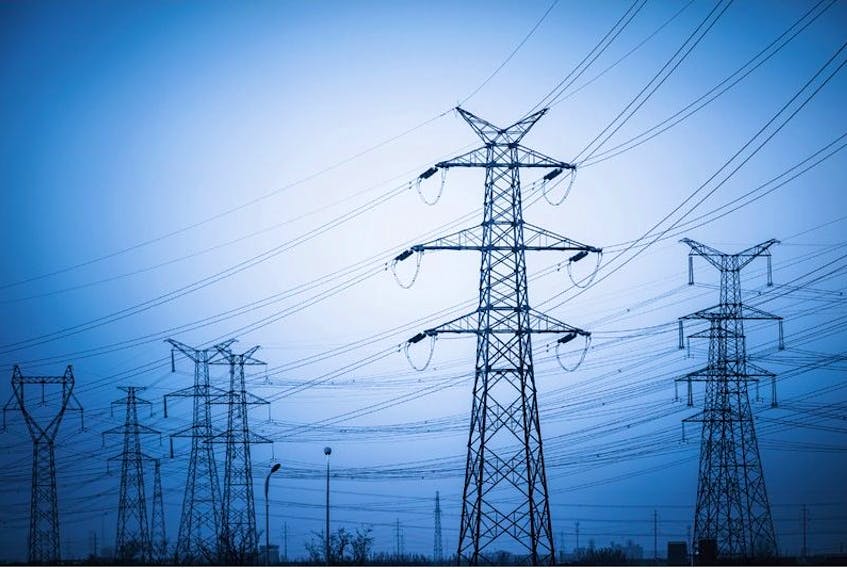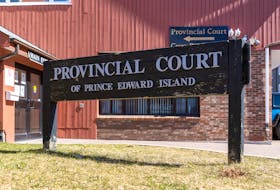There’s no one to buy most of the electricity Nalcor Energy’s Muskrat Falls project will produce, says independent electricity researcher and consultant Tom Adams.
“There’s overcapacity in Ontario, Quebec and in New England,” said Adams in an interview. “Everybody’s got juice they’re trying to sell.
“Nalcor is selling a product Nova Scotia needs — but no one else,” he said.
When the St. John’s-based utility first outlined in 2012 where its roughly five terawatt hours of annual energy production would go every year, the plan was for about 40 per cent to be used by Newfoundlanders and Labradorians.
Another 20 per cent was to go to Nova Scotia-based Emera, leaving roughly 40 per cent of Muskrat Falls electricity to be sold on the open market.
But electrical energy prices have taken a beating as low-priced natural gas, which is used to produce 49 per cent of the electricity in the region, has driven costs down.
"Nalcor is selling a product Nova Scotia needs — but no one else." — electricity researcher and consultant Tom Adams
In 2003, when then the current competitive energy market was introduced in New England, a megawatt hour was going for US$48.59, according to ISO New England, the non-profit responsible for the reliable operation of that region’s power grid.
By 2016, that price had dropped 40.4 per cent to US$28.94.
With a surplus of electricity of its own, Massachusetts’ main reason for buying electricity from Canada these days is to get green energy produced by wind turbines, solar panels or hydro projects to meet environmental targets.
And so Nalcor has gone in with Emera on its Atlantic Link bid which includes the building of a 1,000-megawatt, 563-kilometre transmission line at a cost of $2 billion to link New Brunswick with Massachusetts and provide that state with clean energy.
With the Maritime Link now connecting Newfoundland to Cape Breton, the Atlantic Link would give Emera and Nalcor the means to deliver a lot of electricity to New England.
But Adams isn’t optimistic the Atlantic Link will ever get the nod.
“It’s very unlikely,” he said. “Hydro-Québec is very active and has been for decades selling into the Boston market. Their transmission system is set up … and their trading desk for those kinds of market opportunities. Hydro-Québec is the trusted supplier for these markets.”
According to Adams, Nalcor will likely not only be unable to sell Muskrat Falls electricity in the New England and Quebec markets, but even fail to sell much of it in Newfoundland and Labrador.
The net effect of foisting most of the estimated $12.7-billion cost of Muskrat Falls onto Newfoundlanders and Labradorians will be to drive up electrical rates in that province — and consumers will fight back by cutting their energy usage and moving out, Adams predicted.
The result will be a drop in demand so great it will leave Nalcor with no net gain in sales of electricity in that province, he said.
“Power rates are going to approximately double (in Newfoundland and Labrador) and that’s likely to make the demand for electricity drop by 20 per cent (in that province), which is about two terawatt hours,” he said. “That’s what was projected to be used in the province.”
Read the entire series here
Many Newfoundlanders and Labradorians will pick up and leave after Muskrat Falls comes online, not just because of a hike in their electrical bills but also because of the ripples higher energy prices will have on the provincial economy, he said.
“The cost of electricity is a factor in everything you consume … when you buy groceries or go to a restaurant for a meal,” said Adams. “It also affects industrial and commercial customers because they have to recover their costs. One of the impacts of Muskrat Falls is it will represent a challenge for businesses, and they will reduce the number of jobs.”
The electricity researcher figures rates in Newfoundland and Labrador, now at 12 cents per kilowatt hour, will hit upwards of 23 cents per kilowatt hour once Muskrat Falls comes online, and continue climbing for the next 50 years.
That scenario — if correct — would leave Nalcor Energy scrounging for a market for up to 80 per cent of the electricity to be produced by Muskrat Falls.
And Adams says it’s unclear who, if anyone, will buy it. There are only two possible but unlikely developments which he considers might create a future market for Muskrat Falls electricity.
The first is that the current low price of natural gas, which has been driving down the cost of producing electricity in New England for years, may start to climb. If that were to happen, Muskrat Falls-produced electricity might be more competitively priced compared to New England’s own electricity.
The other scenario is that Ontario Power Generation, the electrical utility in that province, could start backing out of its longstanding use of nuclear reactors to produce electricity as these aging plants continue to need to be retrofitted.
“Nuclear plants are hard to fix,” said Adams. “They’re having major problems … with nuclear refurbishment.”
Maybe so.
But the Ontario utility is now into its second year of its $12.8-billion refurbishment of all four nuclear reactors at its Darlington plant and, while there have been challenges, there are no signs yet of any decision to stop using nuclear energy in that province.
If the Darlington power plant were to stop using even just one of its nuclear reactors, the drop in electrical generation would be greater than the entire capacity at Muskrat Falls.









